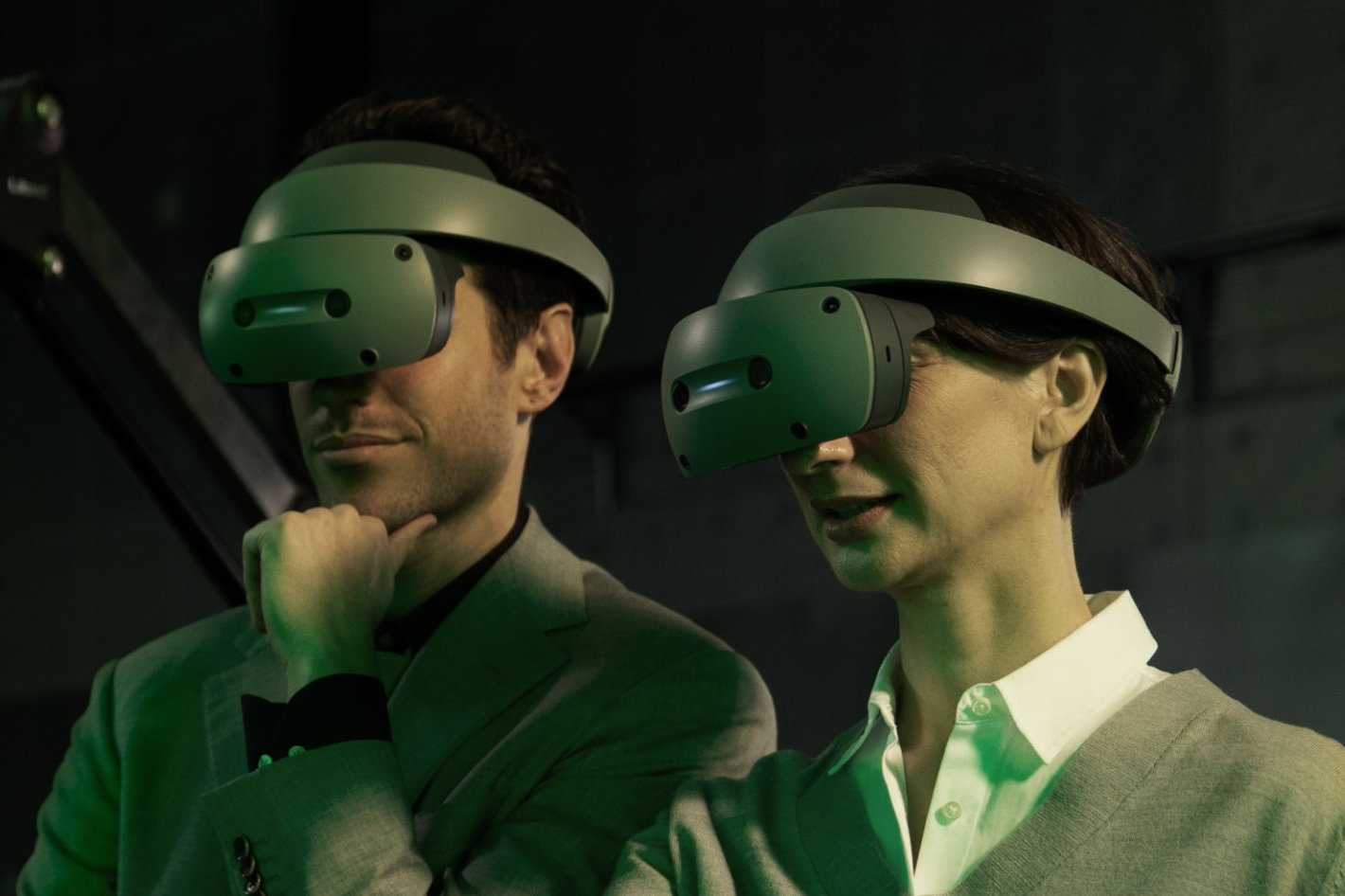
Now we know the name of the fifth company using the Snapdragon XR2+ Gen 2 Platform, the latest XR processor by Qualcomm Technologies: it’s Sony! The company revealed at CES 2024 that it is developing a “Spatial Content Creation System, Equipped with High-Quality XR Head-Mounted Display and Controllers Dedicated to Interaction with 3D Objects.”
The head-mounted display is equipped with large-size, high-definition 1.3-type OLED Microdisplays with 4K resolution and a wide color gamut that covers up to 96% of DCI-P3. Sony’s proprietary rendering technology enables real-time, high-definition and realistic rendering of textures of 3D objects and facial expressions of human characters.
The head-mounted display provides, Sony notes, “comfort and stability required for extended creative use, by fine-tuning the balance of the device’s center of gravity, and the design and material for pads that come into direct contact with the user’s head. Additionally, the flip-up mechanism of the display part allows creators to easily and seamlessly move between physical and virtual spaces, without having to recalibrate the device when removing and wearing the entire device.”
“We designed our Snapdragon XR2+ Gen 2 to deliver 4K display resolution, cutting-edge graphics, and unparalleled performance to enable creators to build innovative spatial content that will transform all industries for the better,” said Said Bakadir, Senior Director, Product Management of Qualcomm Technologies, Inc. “It’s exciting to see Sony enter the enterprise space with their spatial content creation system and utilize Snapdragon XR technologies to unleash more realistic, detailed, and precise Mixed Reality (MR)/VR experiences that will help developers and creators push forward an even more immersive future.”
In addition to video see-through functionality and spatial recognition with six cameras and sensors in total, Sony’s system features a ring controller that allows users to intuitively manipulate objects in virtual space, as well as a pointing controller that enables precise pointing, allowing creators to craft in virtual space with controllers and keyboards, all while wearing the head-mounted display.
According to Sony, “creators will not only be able to see real-scale 3D models in an Extended Reality (XR) environment with the high-definition display, but also create and modify 3D models in it. Through integration with third-party 3D creation applications, it also supports remote, real-time review between locations, making this an intuitive and immersive tool for the entire process of spatial content creation.”
Sony says that by supporting split rendering, which distributes the rendering load between computers and the head-mounted display, the system now revealed is capable of stable and high-definition rendering of large-size 3D models. The company adds that the images shown now are for illustration purposes only and may not be an exact representation of the final product.
The system will be available later in 2024. Sony and its partners will announce further details including specs, launch date and regions, pricing, sales channels, and software compatibility.
